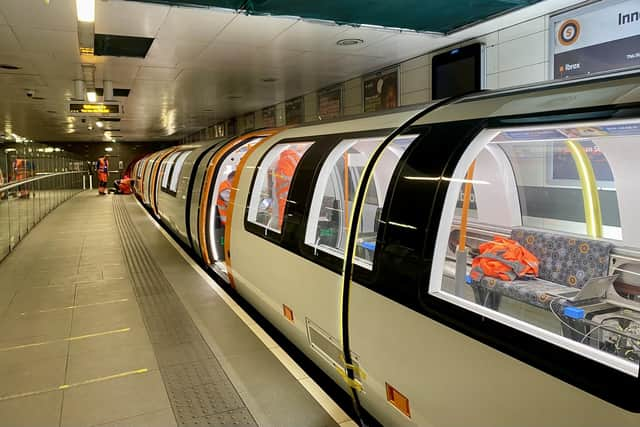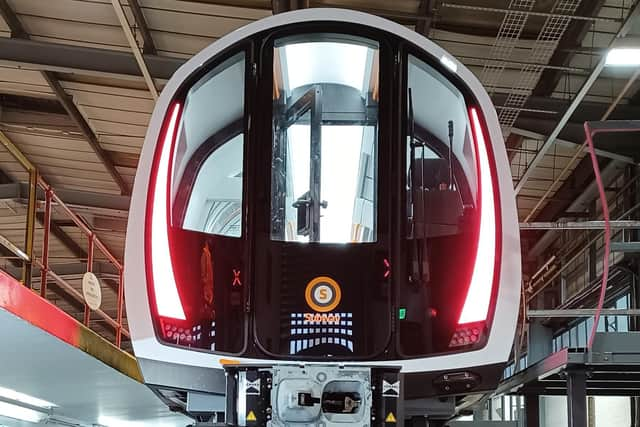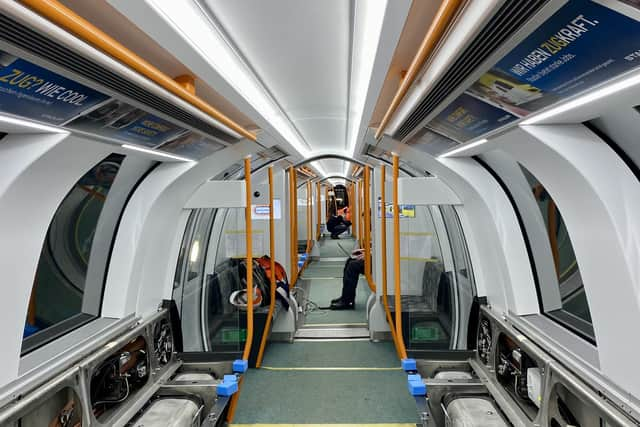New Glasgow Subway trains will run without any staff on board from 2025
However, the Subway’s 15 stations will continue to be staffed.
The trains form part of a £289 million upgrade that will enable more frequent trains to run, which will have open-plan, walk-through interiors replacing separate carriages and allow passengers to see along tunnels from windows at each end.
Advertisement
Hide AdAdvertisement
Hide AdFull speed testing of the first of the 17-strong fleet is underway in the circular system overnight.
They will initially be controlled by drivers when they start carrying passengers in 2023.
However, operator Strathclyde Partnership for Transport (SPT) has announced full “Unattended Train Operation” (UTO) is due to begin two years later, with no drivers or staff on board the trains.
The move will follow the installation of platform screen doors at Subway stations, which open when a train stops like on the several London Underground lines.


UTO is used on some underground lines in Paris, Barcelona and Copenhagen.
However, other UK systems without drivers, such as the Docklands Light Railway in London, still have on-board staff to operate the doors.
The Subway’s new trains will increase its peak four-minute frequency to two to three minutes.
The project will mark the biggest development on the 126-year-old system since it was shut down for three years for a major overhaul in the late 1970s.


Advertisement
Hide AdAdvertisement
Hide AdBut this time the project is due to be completed with only short-term closures, such as the month-long shutdown in 2016 while a link with the Subway’s surface-level train depot in Govan was upgraded.
The introduction of the trains is running three years late, which has been blamed on Ansta, a consortium of Italian signalling firm Ansaldo and Swiss train builders Stadler, starting the upgrading work late.
There have also been problems installing new signalling and control equipment in the Victorian tunnels, which are part of the third oldest underground in the world after London and Budapest.


The first three new trains were trialled on a test track near Ibrox before an initial “tunnel entry exercise” in December, which was followed by full test running in the Subway since April.
A report to a meeting of SPT’s ruling Partnership board on Friday stated: “The commencement of this testing is the culmination of a huge amount of work by the combined SPT and Ansta teams and is a significant milestone for both the project and the history of the Subway and the first time new powered vehicles have entered the system since the 1970s."
An SPT spokesperson said: “The latest forecast from our joint venture contractor delivering the new rolling stock, signalling and communication system is that full UTO should be achieved by 2025, and once platform screen doors have been fitted in all stations.
“Despite the challenges of the last few years, progress is being made across the modernisation programme with the testing of the first trains in the Subway system currently underway.
"Testing commenced with speed increasing to gradually build up vehicle speed to ensure there are no clashes between the train and tunnel infrastructure.”
Comments
Want to join the conversation? Please or to comment on this article.
